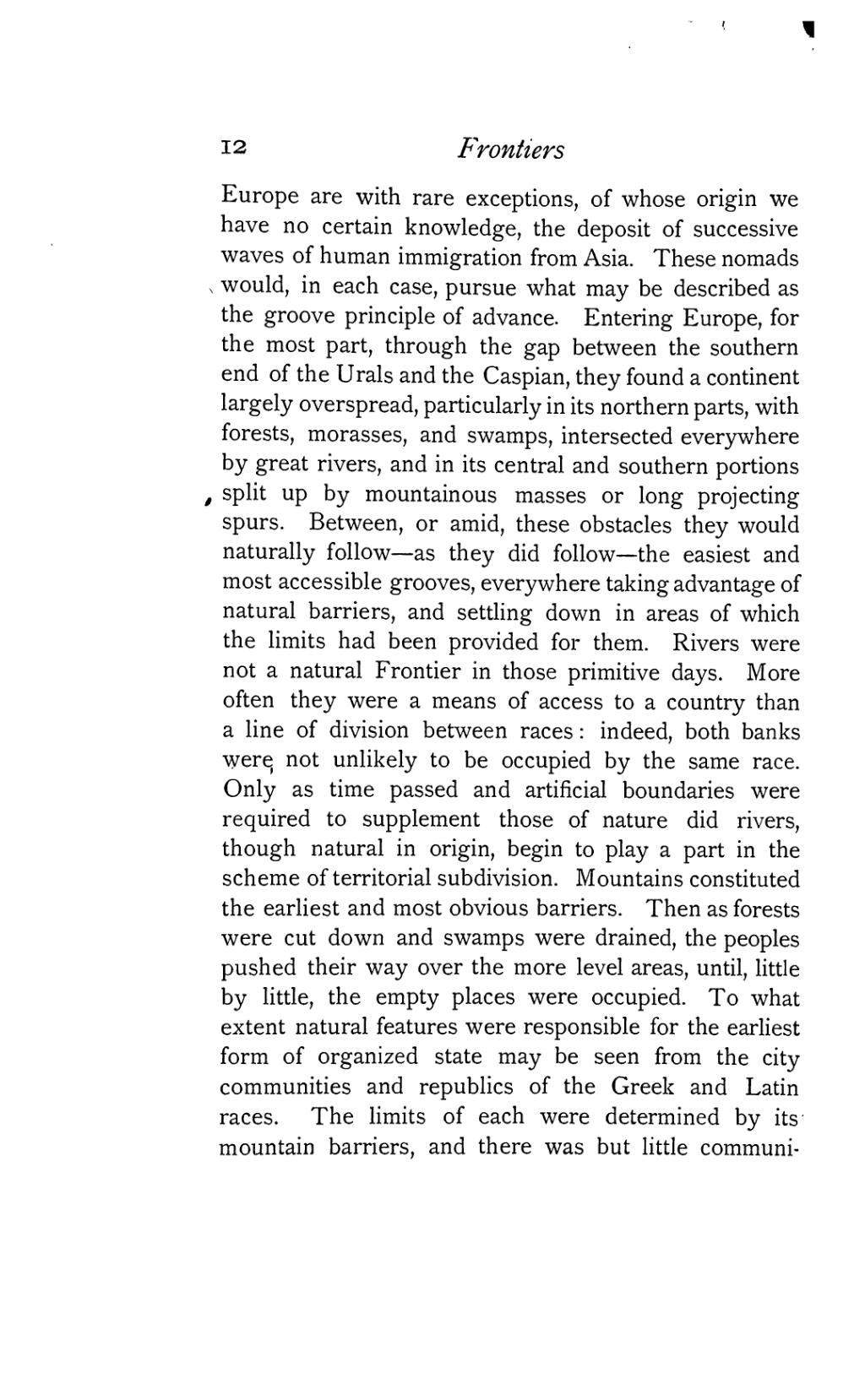Europe are with rare exceptions, of whose origin we have no certain knowledge, the deposit of successive waves of human immigration from Asia. These nomads would, in each case, pursue what may be described as the groove principle of advance. Entering Europe, for the most part, through the gap between the southern end of the Urals and the Caspian, they found a continent largely overspread, particularly in its northern parts, with forests, morasses, and swamps, intersected everywhere by great rivers, and in its central and southern portions split up by mountainous masses or long projecting spurs. Between, or amid, these obstacles they would naturally follow—as they did follow—the easiest and most accessible grooves, everywhere taking advantage of natural barriers, and settling down in areas of which the limits had been provided for them. Rivers were not a natural Frontier in those primitive days. More often they were a means of access to a country than a line of division between races: indeed, both banks were not unlikely to be occupied by the same race. Only as time passed and artificial boundaries were required to supplement those of nature did rivers, though natural in origin, begin to play a part in the scheme of territorial subdivision. Mountains constituted the earliest and most obvious barriers. Then as forests were cut down and swamps were drained, the peoples pushed their way over the more level areas, until, little by little, the empty places were occupied. To what extent natural features were responsible for the earliest form of organized state may be seen from the city communities and republics of the Greek and Latin races. The limits of each were determined by its mountain barriers, and there was but little communi-
